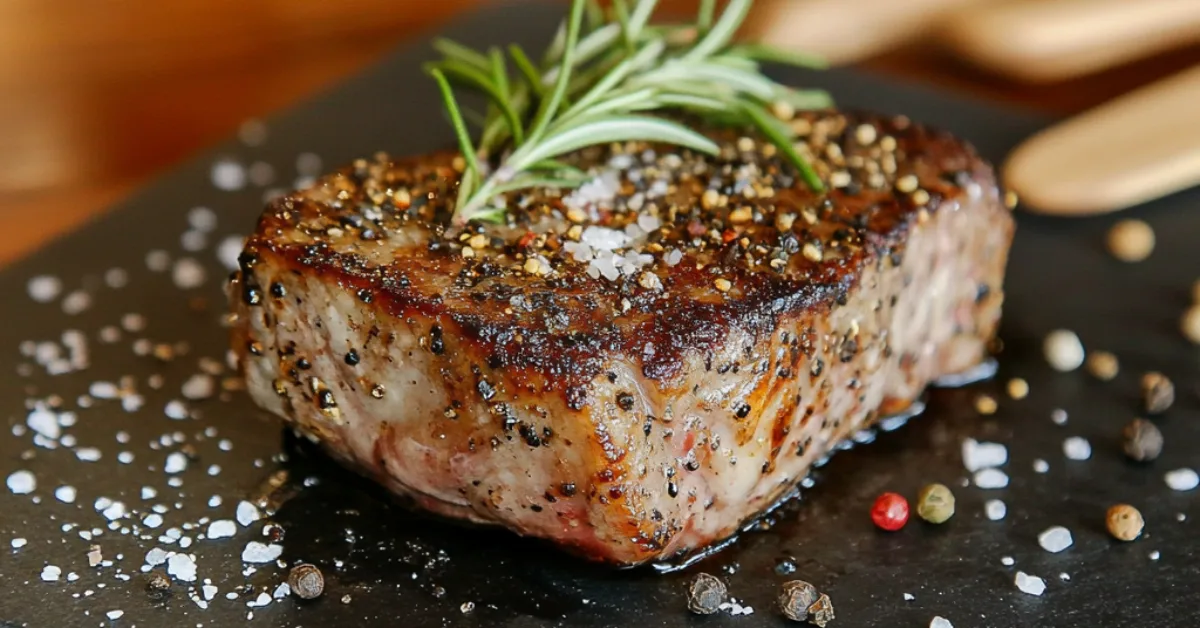Introduction
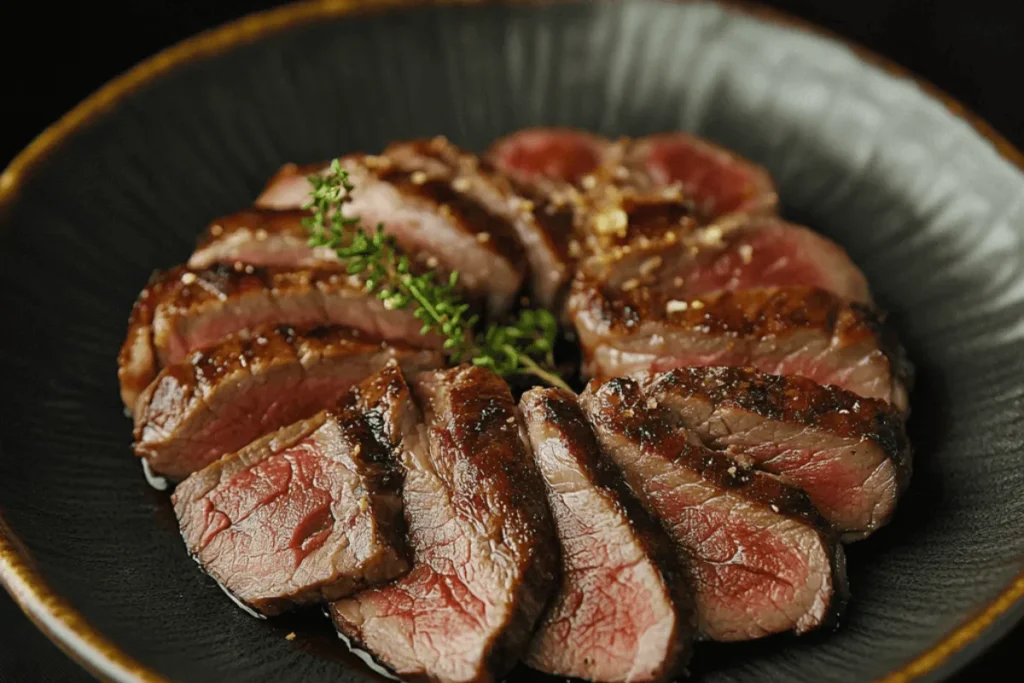
Few cuts of meat command attention quite like the Tomahawk steak. With its dramatic, long bone and generous marbling, this impressive cut is as much a feast for the eyes as it is for the palate. Often referred to as the “king of steaks,” the Tomahawk is essentially a bone-in ribeye, but its signature exposed bone gives it a distinct appearance reminiscent of a tomahawk axe—hence the name.
Loved by steak enthusiasts and culinary adventurers alike, the Tomahawk steak isn’t just about looks—it’s prized for its rich flavor, tender texture, and ability to create a memorable dining experience. Whether you’re planning to grill it outdoors or sear it in a cast-iron skillet, this steak is a show-stopping centerpiece for any meal.
In this guide, we’ll cover everything you need to know about Tomahawk steak—from what makes it unique and how to choose the perfect cut, to expert tips on cooking methods and serving suggestions. By the end, you’ll be ready to impress your guests with a mouthwatering steak that’s cooked to perfection!
What Is a Tomahawk Steak?
What Makes It Unique?
The tomahawk steak is more than just a cut of beef—it’s a culinary masterpiece that combines visual appeal, exceptional flavor, and versatility. Its unique characteristics set it apart from other steaks, making it a favorite for grilling enthusiasts, foodies, and chefs. Here’s what makes the tomahawk steak stand out:
Iconic Bone-In Presentation:
The tomahawk steak features a long, frenched bone that resembles the handle of a tomahawk axe, giving it its signature name. This dramatic presentation makes it an eye-catching centerpiece, perfect for celebrations, special occasions, and gourmet dining experiences.
Rich Marbling for Unmatched Flavor:
Cut from the rib primal section, the tomahawk steak shares the same qualities as a classic ribeye, including generous marbling. The intricate layers of fat melt during cooking, infusing the meat with a rich, buttery flavor and ensuring tenderness in every bite.
Flavor-Enhancing Bone:
The bone in the tomahawk steak isn’t just decorative—it plays a key role in enhancing flavor. As the meat cooks, the bone releases moisture and marrow, adding depth and complexity to the flavor profile. It also helps retain heat, ensuring even cooking throughout the steak.
Thick, Juicy Cut:
With a typical thickness of 2 inches or more, the tomahawk steak is a substantial cut that offers a juicy interior and a perfectly seared crust. Its size allows it to be cooked using techniques like reverse-searing or slow-roasting, which highlight its flavor and texture.
Perfect for Sharing:
Weighing between 30 to 45 ounces, the tomahawk steak is ideal for sharing. It’s large enough to feed multiple people, making it a centerpiece for gatherings and social occasions. Served whole or sliced into thick pieces, it’s a crowd-pleaser that encourages communal dining.
Versatile Cooking Methods:
The tomahawk steak adapts well to various cooking techniques, including grilling, pan-searing, oven-roasting, and reverse-searing. Its size and structure allow it to retain moisture and flavor, no matter the method, while the bone helps maintain even heat distribution.
Luxurious and Gourmet Appeal:
Known as a premium steakhouse cut, the tomahawk steak is often associated with luxury and indulgence. Its size, presentation, and flavor make it a symbol of fine dining, appealing to food connoisseurs and steak enthusiasts alike.
Prime Ribeye Quality:
The tomahawk steak shares its origin with the ribeye, one of the most popular and flavorful cuts of beef. Its prime grade quality, rich marbling, and tenderness make it an ideal choice for anyone seeking a high-end steak experience.
Memorable Dining Experience:
From its striking appearance to its exceptional flavor, the tomahawk steak delivers more than just a meal—it creates an experience. It’s perfect for grilling demonstrations, steakhouse menus, and home-cooked celebrations, ensuring that every serving is both delicious and unforgettable.
Origins and History?
The tomahawk steak stands out as a true showstopper in the world of beef. Whether you’re preparing it for a backyard barbecue or a formal dinner, its combination of visual appeal, flavor, and tenderness guarantees a dining experience that’s as enjoyable to cook as it is to eat.
The tomahawk steak boasts a rich history rooted in traditional butchery and culinary heritage. Its origins can be traced back to classic ribeye cuts, but its distinctive long bone sets it apart as a visual and culinary statement. Over time, this cut has evolved into a premium selection favored by steak enthusiasts and gourmet chefs alike.
Ancient Roots of Bone-In Cuts:
The practice of cooking meat with the bone intact dates back to ancient civilizations. Early hunters and gatherers often cooked large pieces of meat with bones to preserve moisture and enhance flavor. This method was both practical and flavorful, laying the foundation for modern cuts like the tomahawk steak.
Influence of Traditional Butchery Techniques:
The tomahawk steak stems from the rib primal section, which has long been celebrated for its tenderness and rich marbling. Butchers began to french the rib bone—trimming away excess meat and fat to create a clean, elegant appearance. This technique was inspired by French culinary traditions, adding sophistication to the presentation.
Connection to the Ribeye:
Closely related to the ribeye steak, the tomahawk steak retains the same prized characteristics of this classic cut. Its marbling, flavor, and tenderness link it to the long-standing popularity of ribeye steaks, which have been a staple in fine dining and home kitchens for generations.
Symbolism Behind the Name:
The tomahawk steak gets its name from its striking resemblance to a Native American tomahawk axe. This name reflects its bold and dramatic look, emphasizing its role as a centerpiece for meals and celebrations. The tomahawk axe was historically associated with strength and utility, qualities mirrored in this impressive cut of meat.
Modern Rise to Fame:
While the tomahawk steak has traditional roots, its rise to fame in modern cuisine can be credited to steakhouses, celebrity chefs, and social media. Its photogenic appearance and luxurious appeal have made it a staple at high-end restaurants and viral cooking videos, cementing its status as a must-try delicacy.
Steakhouse Favorite and Gourmet Appeal:
Over the years, the tomahawk steak has become synonymous with indulgence and fine dining. Its dramatic presentation and rich flavor make it a top choice in high-end steakhouses and specialty meat markets. The combination of visual appeal and gourmet taste has solidified its place in contemporary food culture.
International Influence:
Though it gained prominence in American steakhouses, the tomahawk steak has become popular worldwide. It’s now celebrated in culinary traditions across Europe, Australia, and Asia, often featured in upscale restaurants and barbecue festivals. This global influence highlights its versatility and universal appeal.
The tomahawk steak’s origins and evolution reflect both ancient cooking methods and modern culinary innovation. Its historical connection to ribeye cuts and its association with premium dining have made it a timeless favorite. Whether served at a backyard barbecue or a five-star restaurant, the tomahawk steak carries a legacy of flavor, elegance, and indulgence.
Why Is It Called a Tomahawk Steak?
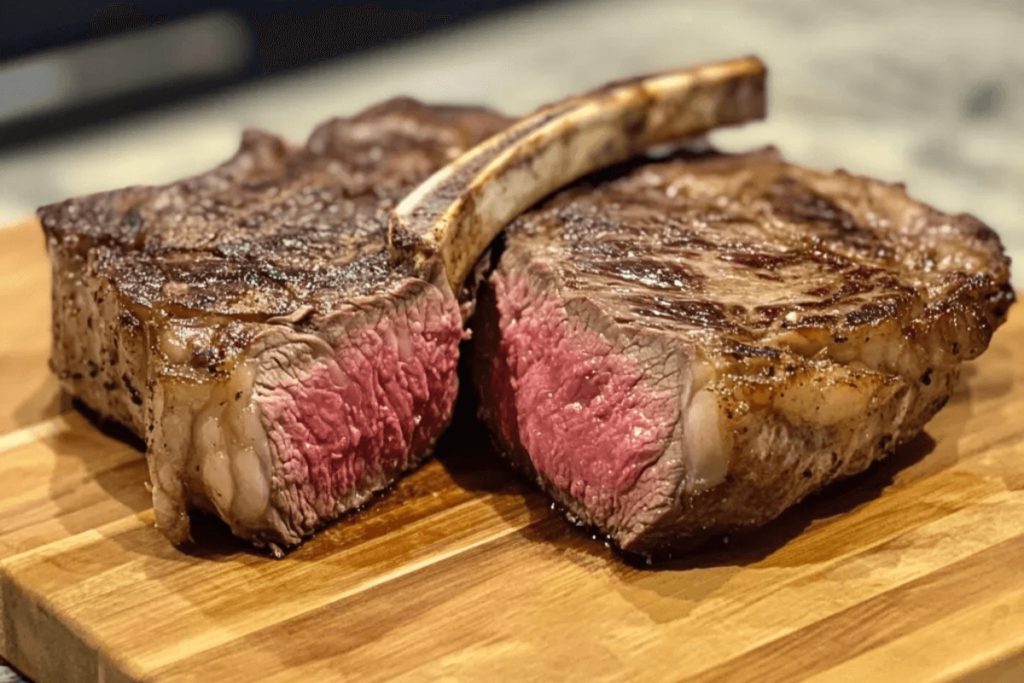
The tomahawk steak gets its name from its resemblance to a traditional tomahawk axe, a tool used by Native American tribes. Its long, exposed rib bone mimics the handle of an axe, while the thick, meaty portion represents the axe head. This distinctive appearance not only makes it visually striking but also contributes to its reputation as a luxurious and show-stopping cut of meat.
Connection to Native American Culture:
The tomahawk axe was more than just a practical tool; it symbolized strength, craftsmanship, and tradition in Native American culture. The tomahawk steak mirrors these qualities through its bold presentation and robust flavor. Its name adds a layer of historical significance, making it more than just a meal—it becomes a conversation starter and a tribute to artistry and heritage.
Marketing and Modern Appeal:
The name tomahawk steak was chosen not only for its resemblance to the axe but also for its marketing potential. It exudes boldness and exclusivity, attracting diners looking for something extraordinary. Restaurants and steakhouses often promote it as a centerpiece dish, appealing to those who value visual presentation and indulgent dining experiences. Its name reinforces its status as a premium and memorable cut.
Practical Function of the Bone:
The long bone of the tomahawk steak is not just decorative; it serves practical purposes as well. It acts as a natural handle, making it easier to flip and move the steak during cooking. Additionally, the bone helps retain heat and moisture, enhancing the flavor and texture of the meat. This functional element adds to its appeal, combining visual drama with culinary performance.
Symbol of Celebration and Indulgence:
With its impressive size and dramatic look, the tomahawk steak is often associated with celebrations and special occasions. Its substantial weight and rich marbling make it perfect for sharing, turning meals into memorable experiences. Whether cooked over a grill or served in a fine-dining restaurant, the tomahawk steak embodies luxury, indulgence, and a sense of festivity.
How to Choose the Best Tomahawk Steak?
Grading and Quality?
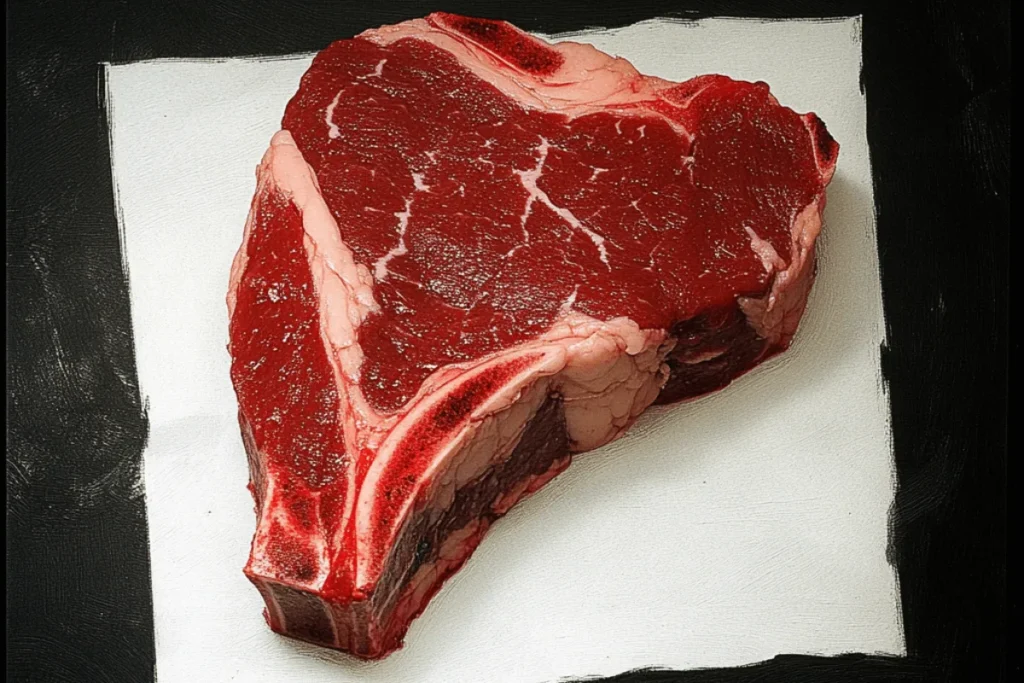
The grading and quality of a tomahawk steak are essential factors that determine its flavor, tenderness, and overall appeal. These aspects are assessed based on specific standards set by governing bodies like the United States Department of Agriculture (USDA) in the United States and equivalent organizations worldwide. Grading evaluates the meat’s marbling, texture, color, and maturity, ensuring that consumers can make informed choices about the quality of their steak.
USDA Grading System:
In the United States, the USDA grading system classifies beef into three primary categories—Prime, Choice, and Select. Tomahawk steaks are often sourced from Prime or high-Choice beef, as these grades provide excellent marbling and flavor. Prime-grade steaks are considered the best due to their abundant marbling, which enhances tenderness and juiciness. Choice-grade steaks also deliver good quality but with slightly less marbling, making them a more affordable option without compromising too much on taste.
Marbling and Flavor:
Marbling describes the white specks of fat that are interspersed within the muscle of the meat. It is a key indicator of flavor and juiciness, as fat melts during cooking and bastes the steak from within. Tomahawk steaks are prized for their high marbling, which not only adds richness but also ensures a tender and buttery texture. The more marbling a steak has, the higher its grade and quality, contributing to a superior dining experience.
Texture and Tenderness:
The tomahawk steak is cut from the ribeye section, which is naturally tender due to its location on the cow. This area experiences minimal muscle movement, resulting in soft, well-marbled meat. High-quality tomahawk steaks have a smooth texture and break down easily during cooking, delivering a melt-in-your-mouth experience. Proper aging, whether dry or wet, further enhances tenderness by allowing natural enzymes to soften the meat fibers.
Color and Freshness Indicators:
The color of a tomahawk steak also reflects its quality. Fresh, high-quality cuts exhibit a bright red hue, which indicates proper oxygenation. Steaks with dull or brownish tones may signal aging or spoilage. Additionally, the fat should be creamy white rather than yellow, suggesting freshness and proper handling.
Sourcing and Certifications:
Premium tomahawk steaks often come from specific breeds of cattle known for their superior quality, such as Angus or Wagyu. These breeds are celebrated for their rich marbling and exceptional flavor. Certifications, such as USDA Certified Angus Beef, provide further assurance of quality, indicating that the meat meets strict standards for tenderness, juiciness, and flavor.
Grass-Fed vs. Grain-Fed:
The diet of the cattle also influences the steak’s flavor and texture. Grass-fed tomahawk steaks are leaner, with a more earthy flavor, while grain-fed options typically have more marbling and a sweeter taste. Both options have their appeal, and the choice often depends on personal preference and dietary considerations.
Aging Process and Its Role:
The aging process is another factor affecting quality. Dry-aged tomahawk steaks are stored in temperature-controlled environments for several weeks, allowing moisture to evaporate and flavors to concentrate. This process also tenderizes the meat, creating a richer taste and velvety texture. Wet-aged steaks, sealed in vacuum packaging, retain moisture and develop tenderness over time, offering a fresher and juicier profile.
Price and Quality Balance:
While higher grades like USDA Prime or Wagyu command premium prices, they deliver an unmatched flavor and texture that justify the cost. However, Choice-grade tomahawk steaks can also provide excellent quality at a more affordable price, making them accessible to a broader range of consumers without sacrificing enjoyment.
Tomahawk steaks are celebrated not only for their visual impact but also for their exceptional quality. Whether you prefer a USDA Prime cut for its luxurious marbling or opt for a grass-fed, organic option for its natural flavors, understanding grading and quality ensures you get the best steak for your preferences and budget.
Marbling and Thickness?
Marbling and thickness are two defining characteristics that make the tomahawk steak highly desirable. These features significantly influence the steak’s flavor, tenderness, and cooking performance, setting it apart as a premium cut. Understanding these elements allows steak enthusiasts to appreciate what makes the tomahawk steak so exceptional.
Importance of Marbling:
Marbling refers to the fine streaks of intramuscular fat dispersed throughout the meat. These fat deposits are critical because they melt during cooking, infusing the steak with moisture and flavor. The higher the marbling, the more tender and juicy the steak becomes. Tomahawk steaks are often sourced from high-quality beef, such as USDA Prime or Wagyu, which are renowned for their rich marbling.
Flavor Enhancement Through Marbling:
The fat within the marbling doesn’t just add moisture—it also delivers a rich, buttery flavor that intensifies as the steak cooks. This self-basting effect enhances the meat’s taste, creating a melt-in-your-mouth texture that steak lovers crave. Marbling also contributes to a caramelized crust when seared, adding another layer of flavor and visual appeal.
Visual Appeal and Grading Standards:
Well-marbled tomahawk steaks often have a luxurious appearance, with visible white flecks of fat evenly distributed throughout the red meat. Grading systems like USDA and Wagyu Beef Marbling Score (BMS) evaluate marbling quality, helping buyers identify the best cuts. Higher grades, such as USDA Prime or Wagyu Grade 5-9, indicate superior marbling, making them ideal for special occasions and gourmet meals.
Thickness and Cooking Precision:
The tomahawk steak is prized not only for its marbling but also for its impressive thickness. Typically cut to 2 inches or more, this thickness ensures the steak remains juicy and tender, even when cooked over high heat. The generous size allows for even cooking and better heat retention, preventing the steak from drying out.
Advantages of Thickness in Cooking:
The thickness of the tomahawk steak allows for greater control during cooking. Whether it’s grilled, pan-seared, or reverse-seared, the thick cut provides ample time to develop a flavorful crust while maintaining a perfect medium-rare or medium interior. Its thickness also supports techniques like sous vide, ensuring precise doneness before finishing it off with a high-heat sear.
Retaining Moisture and Juiciness:
Thicker cuts like the tomahawk steak are less prone to overcooking, as their substantial size helps retain moisture. The bone-in structure further assists by acting as an insulator, slowing heat transfer and preserving juices within the meat. This combination of thickness and bone protection results in a steak that is both tender and flavorful.
Show-Stopping Presentation:
The thickness of a tomahawk steak, combined with its long bone, makes it visually stunning. It’s often chosen as a centerpiece for special gatherings and celebrations, where its impressive size and structure become a focal point. The steak’s substantial thickness also adds to the satisfaction of slicing into it, making it a true feast for the senses.
Balancing Thickness with Cooking Time:
While the thickness of a tomahawk steak is a major advantage, it also requires careful attention to cooking times. Its size means that methods like reverse-searing or oven-finishing are often preferred to achieve even cooking without burning the exterior. This ensures that the steak is cooked to perfection, with a crispy crust and a tender, juicy center.
Marbling and thickness work together to define the tomahawk steak’s appeal, delivering exceptional flavor, tenderness, and visual impact. These qualities make it a favorite for both chefs and home cooks, promising a memorable dining experience every time.
Where to Buy Tomahawk Steaks?
Tomahawk steaks are widely available through a variety of outlets, ranging from local butchers to premium online retailers. Given their reputation as a specialty cut, finding the perfect tomahawk steak requires knowing where to shop, what to look for, and how to ensure top quality. Whether you prefer in-person shopping or the convenience of online orders, there are plenty of options to suit your needs.
Local Butcher Shops and Specialty Meat Markets:
Local butcher shops are often the best places to find high-quality tomahawk steaks. Butchers can provide detailed information about the meat’s source, grade, and aging process. Many butcher shops also offer custom-cut tomahawk steaks, allowing you to select the exact thickness and size you prefer. Additionally, shopping at a butcher gives you the opportunity to ask questions and receive expert advice on preparation, seasoning, and cooking techniques.
Grocery Stores and Supermarkets:
Many upscale grocery stores and supermarkets carry tomahawk steaks, particularly in their premium meat sections. Chains like Whole Foods Market and Costco often stock USDA Prime or Choice cuts, giving you access to high-quality options. These stores may also offer pre-packaged steaks, making it easy to pick up a tomahawk steak during a routine shopping trip. However, the selection might be more limited compared to specialty butchers.
Online Meat Retailers and Delivery Services:
Online retailers have become increasingly popular for purchasing tomahawk steaks, thanks to their convenience and wide variety of options. Websites like Snake River Farms, Crowd Cow, and Porter Road specialize in premium beef, including Wagyu and USDA Prime tomahawk steaks. These platforms often provide detailed descriptions, photos, and customer reviews to help guide your purchase. Many online retailers also offer delivery in vacuum-sealed packaging with temperature-controlled shipping, ensuring freshness upon arrival.
Local Farmers’ Markets and Ranches:
For those who prefer locally-sourced, organic, or grass-fed beef, farmers’ markets and ranches can be excellent places to shop. Many small farms sell directly to consumers, allowing you to trace the origin of the meat and support sustainable farming practices. Buying directly from farmers also gives you the opportunity to ask about feeding methods, processing techniques, and certifications such as organic or hormone-free labels.
Wholesale Clubs and Bulk Stores:
Wholesale stores like Costco and Sam’s Club often stock tomahawk steaks at competitive prices, particularly in bulk packaging. While these cuts may not always be as customizable as those from a butcher, they are ideal for those planning large gatherings or looking to save money without compromising quality. Many wholesale clubs also carry imported or specialty-grade steaks, providing more options for discerning buyers.
Restaurant Supply Stores:
Restaurant supply stores are lesser-known but excellent sources for tomahawk steaks, especially for those looking to purchase in larger quantities. These stores typically stock premium cuts used by professional chefs, and they often sell to the public without requiring a restaurant license. This option is particularly useful for hosting events or stocking up on steaks for future meals.
Specialty Online Meat Boxes and Subscription Services:
Subscription services like ButcherBox and Omaha Steaks offer tomahawk steaks as part of curated meat boxes delivered directly to your door. These services often focus on ethically sourced, high-quality meats, and they provide added convenience through recurring deliveries. Subscriptions are perfect for those who want to enjoy premium steaks regularly without needing to visit multiple stores.
International and Exotic Meat Markets:
For those looking to explore exotic or imported options, international meat markets can provide specialty tomahawk steaks from breeds like Japanese Wagyu or Australian Angus. These markets often cater to gourmet tastes and offer cuts that are difficult to find in local stores, making them ideal for special occasions and fine-dining experiences at home.
Tips for Buying the Best Tomahawk Steaks:
- Look for well-marbled cuts with even fat distribution, as this ensures tenderness and flavor.
- Check for a bright red color in the meat and creamy white fat, which are signs of freshness.
- Consider the grade—USDA Prime or Wagyu steaks are often the highest quality options available.
- Ensure the bone is clean and exposed, which enhances visual appeal and makes handling easier.
- Ask about aging options, as dry-aged steaks offer deeper flavor while wet-aged steaks retain more moisture.
Finding the perfect tomahawk steak is easier than ever with multiple shopping options available. Whether you visit a trusted butcher, browse online retailers, or explore farmers’ markets, prioritizing quality and freshness ensures a memorable dining experience every time.
Preparation Tips for Cooking Tomahawk Steak
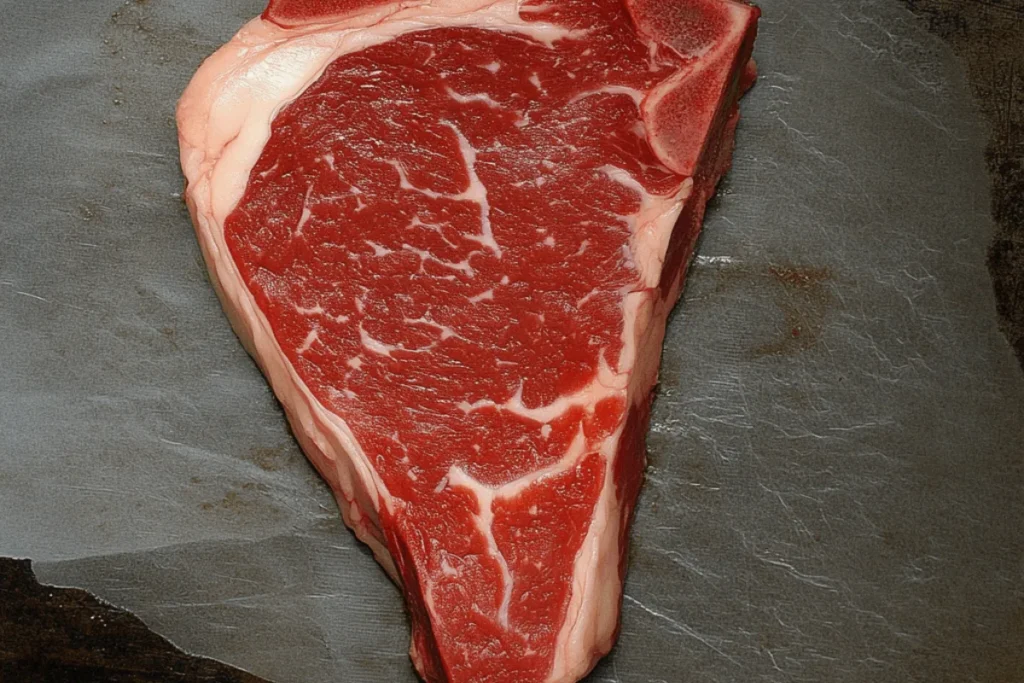
Seasoning the Steak
Seasoning is one of the most crucial steps in preparing a steak, as it can elevate the flavor profile and help create that delicious, savory crust. The right seasoning balances the natural taste of the meat while adding layers of complexity. Here are some essential tips to perfect the art of seasoning your steak:
Salt and Pepper – The Basics
Salt is the foundational seasoning for any steak, and it’s essential to season your steak generously, enhances the natural flavors of the meat and draws out its juices, creating a savory taste. Kosher salt is often preferred due to its larger grains, which allow for better control when sprinkling over the surface. Freshly ground black pepper adds a hint of sharpness, balancing the richness of the beef. Applying salt and pepper shortly before cooking ensures the steak maintains its moisture without drawing out too much water.
Timing Matters
One of the most debated topics in steak seasoning is the timing of salt application. There are two primary schools of thought: salting just before cooking versus salting ahead of time. Salting immediately before cooking creates a crisp, flavorful crust, as the salt draws moisture to the surface and enhances the Maillard reaction. However, salting in advance (30 minutes to an hour before) gives the salt time to dissolve and be reabsorbed into the meat, resulting in a more even seasoning and deeper flavor throughout the steak.
Other Seasonings and Spices
While salt and pepper are essential, additional spices can significantly enhance the flavor of your steak. Garlic powder, onion powder, and smoked paprika add aromatic depth, while herbs like thyme or rosemary lend a fresh, earthy note. A touch of cayenne pepper or chili flakes can bring heat to the steak for those who enjoy a bit of spice. Additionally, experimenting with steak seasoning blends or dry rubs can provide unique flavor combinations. However, it’s important to use these seasonings sparingly, as you don’t want them to overpower the natural beefy taste.
Marinades vs. Dry Seasoning
While dry seasoning allows the meat’s natural flavors to shine, marinades can infuse the steak with additional flavors. A marinade typically combines acid (like lemon juice or vinegar), oil, and various spices and herbs. The acid helps tenderize the meat, while the oil ensures the flavors are absorbed deeply. A well-balanced marinade can give your steak a complex flavor profile, but be cautious not to marinate for too long, as the steak can become overly tender or mushy. For best results, marinate your steak for 30 minutes to 2 hours before cooking.
Resting the Steak After Seasoning
Once your steak is seasoned, give it a brief rest at room temperature before cooking. This allows the seasonings to adhere to the surface and helps the steak cook more evenly. Additionally, allowing the steak to come to room temperature prevents the cold center from slowing down the cooking process, ensuring a more consistent and desirable doneness.
Bringing It to Room Temperature
Allowing your steak to come to room temperature before cooking is a simple yet crucial step in preparing a perfectly cooked steak. Many people may overlook this step, but it plays a significant role in ensuring that the steak cooks evenly and achieves the desired level of doneness. Here’s a deeper look into why this process matters:
Promotes Even Cooking
When a steak is taken directly from the fridge and placed in a hot pan or grill, the cold interior of the meat can result in uneven cooking. The outside of the steak may cook too quickly, leading to an overcooked exterior, while the inside remains undercooked. By allowing the steak to rest at room temperature for 20 to 30 minutes before cooking, you ensure that the meat’s internal temperature is more uniform. This helps the steak cook more evenly, allowing you to achieve a more consistent doneness throughout.
Better Maillard Reaction
The Maillard reaction is the chemical process responsible for creating the delicious crust on the steak. It occurs when heat breaks down amino acids and sugars, resulting in browning and flavor development. If the steak is too cold when it hits the hot surface, the Maillard reaction is less efficient, and the steak may not develop that perfect crust. By bringing the steak to room temperature, you allow the heat to penetrate the surface more effectively, ensuring a beautiful, caramelized crust that enhances flavor and texture.
Faster Cooking Time
A cold steak will require more time to cook through, as the heat must first work to bring the steak up to room temperature before it can start cooking properly. By allowing the steak to come to room temperature before cooking, you reduce the cooking time. This is especially important for thicker cuts of steak, as a quicker, more efficient cook can help achieve the desired doneness without overcooking the outer layers.
Retains Juiciness and Tenderness
A common misconception is that bringing a steak to room temperature will cause it to lose moisture, but in reality, it helps the steak retain its juices during cooking. When you cook a cold steak, the difference in temperature between the exterior and the interior can cause the meat to lose more moisture, leading to a drier steak. Allowing the steak to rest at room temperature minimizes this moisture loss, resulting in a juicier and more tender steak once cooked.
Practical Considerations
The actual amount of time required to bring your steak to room temperature depends on the thickness of the cut. For most steaks, 20 to 30 minutes is sufficient. However, thicker cuts such as ribeye or porterhouse may benefit from a longer resting period of up to 45 minutes. During this time, ensure that the steak is placed on a clean plate or cutting board. Covered loosely with foil to prevent contamination and drying out.
Avoid Room Temperature for Too Long
While bringing your steak to room temperature is important, it’s also essential to avoid leaving it out for too long. If the steak rests at room temperature for an extended period (longer than 1 to 2 hours), it could enter the “danger zone” for bacterial growth, especially if the ambient temperature is too warm. To maintain food safety, keep the steak at room temperature for no more than 30 to 45 minutes before cooking.
This expanded section explains in greater detail why bringing your steak to room temperature is a key part of the cooking process, touching on the benefits it brings in terms of even cooking, flavor development, moisture retention, and overall quality of the final dish.
Cooking Methods for the Perfect Tomahawk Steak?
Reverse Sear Method
The reverse sear method is a popular technique for cooking steak, especially thicker cuts, that results in a perfectly cooked interior with a beautifully caramelized exterior. While traditional searing involves cooking the steak on high heat first, the reverse sear flips the process, starting with low, indirect heat and finishing with a high-heat sear. Here’s a detailed breakdown of why and how this method works so well:Understanding the Reverse Sear Process The reverse sear method begins by cooking the steak in an oven (or on a grill using indirect heat) at a low temperature. This slow cooking phase gradually raises the steak’s internal temperature, ensuring even doneness throughout the meat. Afterward, the steak is transferred to a hot pan, grill, or cast iron skillet to develop a crispy, flavorful crust. This two-step process results in a steak that’s evenly cooked from edge to edge with a tender, juicy interior.
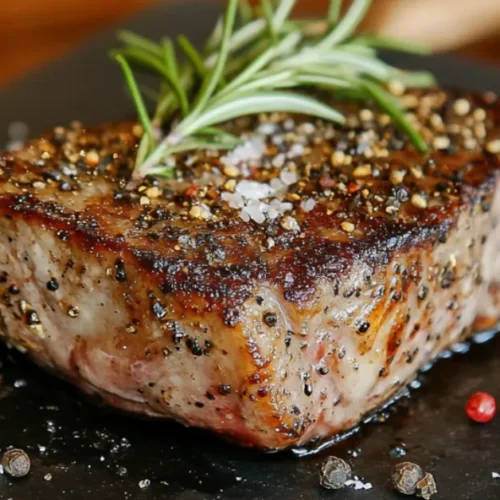
Tomahawk Steak: Everything You Need To Know About This Impressive Cut
Ingredients
- Salt Kosher or sea salt for seasoning
- Black Pepper Freshly ground for flavor
- Olive Oil or Butter For searing the steak
- Fresh Herbs Such as rosemary or thyme, optional for basting
- Garlic Optional, for added flavor when basting
Instructions
- Step 1: Prepare the Steak: Start by seasoning your steak with salt, pepper, and any desired herbs or spices. Let the steak come to room temperature before cooking, which helps it cook more evenly.
- Step 2: Slow Cook: Preheat your oven to a low temperature, typically around 250°F (120°C). Place the steak on a rack over a baking sheet to ensure even heat circulation around the meat. Cook the steak slowly, monitoring the internal temperature with a meat thermometer. This process usually takes anywhere from 30 minutes to an hour, depending on the thickness of the steak and your desired level of doneness.
- Step 3: Sear the Steak: Once the steak has reached your desired internal temperature (usually 5–10°F below the final target), remove it from the oven and let it rest briefly. Heat a cast iron skillet or grill over high heat, and then sear the steak for 1–2 minutes per side, until a rich, golden-brown crust forms. You can also add butter, garlic, and herbs to the pan during this phase to enhance flavor.
- Step 4: Rest and Serve: After searing, let the steak rest for a few minutes to allow the juices to redistribute. Then slice and serve.
Notes
Preparing a Tomahawk Steak
- Bring to Room Temperature: Let the steak sit out for 30-60 minutes before cooking to ensure even cooking throughout.
- Season Generously: Use salt and pepper as a base seasoning. You can also rub the steak with garlic, rosemary, or other herbs for added flavor.
- Trim Excess Fat (Optional): While some fat is essential for flavor, trim any excess fat around the edges to avoid flare-ups during cooking.
Cooking a Tomahawk Steak
- Sear for Crust: Start by searing the steak in a hot cast-iron skillet or on a grill over high heat for 2-3 minutes per side to develop a rich, crispy crust.
- Cook to Desired Doneness: Finish cooking the steak using indirect heat (in the oven, on a cooler part of the grill, or with a reverse sear method) to reach your desired level of doneness.
- Use a Meat Thermometer: Check the internal temperature, aiming for 130°F (54°C) for medium-rare, 140°F (60°C) for medium.
- Let It Rest: After cooking, rest the steak for 5-10 minutes to allow juices to redistribute for a juicier steak.
- Optional Basting: For extra flavor, baste with butter, garlic, and herbs during the final stages of cooking.
If you would like to add a Side Dish to Complement Your Steak i suggest Potato Bake Recipe

